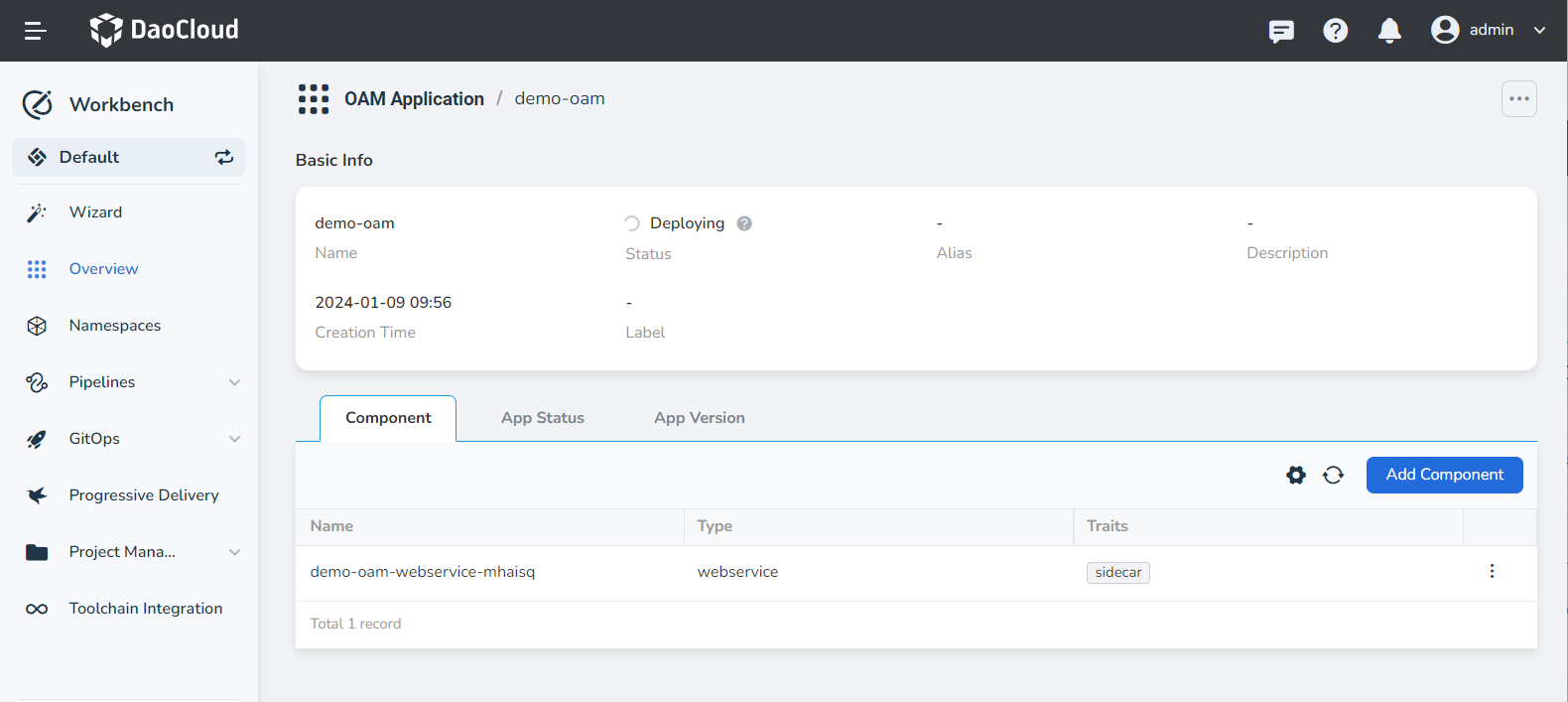Create OAM Application¶
The Open Application Model (OAM) application feature, powered by the open-source software KubeVela, offers a top-tier abstraction for application delivery. It brings together Kubernetes resources to facilitate a standard and efficient application delivery process in a hybrid environment.
For an introduction to OAM concepts, please refer to the Introduction to OAM or the KubeVela Official Documentation.
Prerequisites¶
- Make sure to Create a Workspace and Create a User.
- Add the user to the workspace and assign 'Workspace Editor' or higher permissions.
Procedure¶
-
Navigate to the Workbench > Overview page, select the OAM App tab and click Create Application.
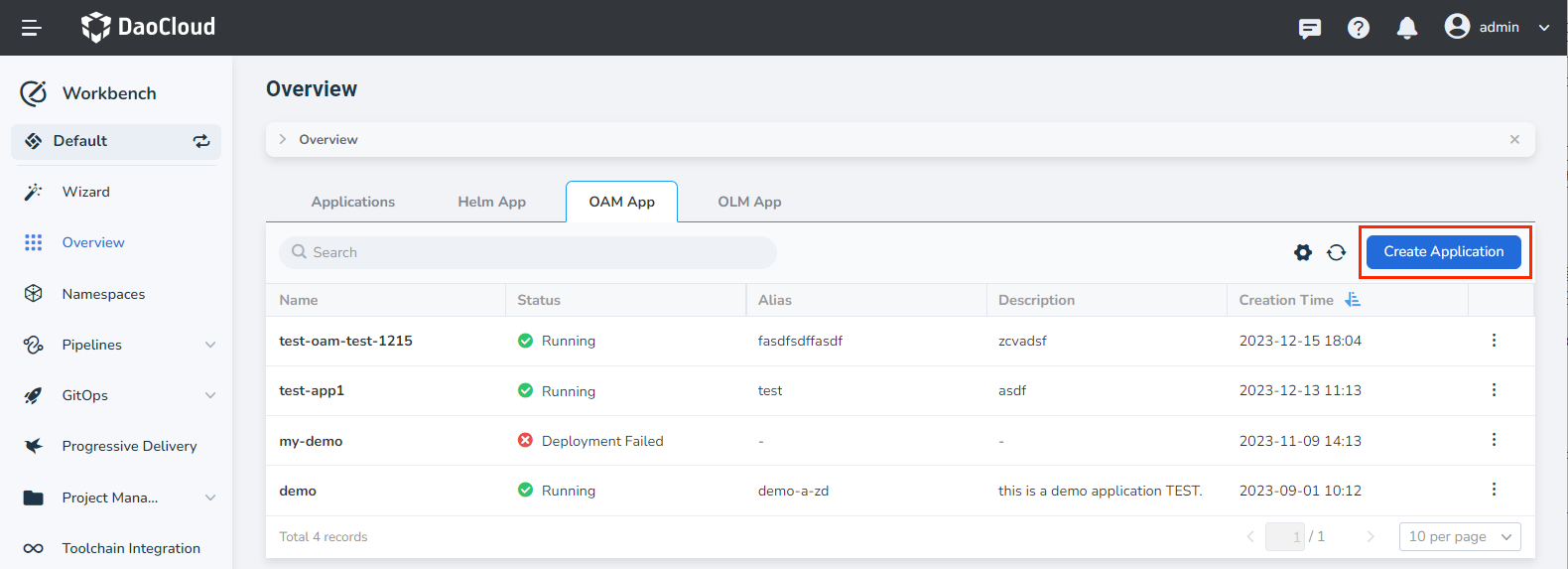
-
Provide the basic information as per the guidelines below and click Next:
- Name/Alias: Enter the name or alias of the OAM application.
- Main Component Type: Different component types necessitate different configurations. For a detailed understanding of various component types, please refer to the Built-in Component List.
- cron-task: This defines a task that runs a code or script periodically.
- task: This defines a task that executes a code or script only once.
- daemon: This defines a service that runs on each node within Kubernetes.
- k8s-object: Each item in the list signifies a complete Kubernetes resource structure.
- webservice: This defines a long-lasting, scalable, containerized service that exposes an endpoint to accept external traffic from clients.
- Deployment Position: Select the cluster and namespace where the application will be deployed. This supports multiple cluster environments.
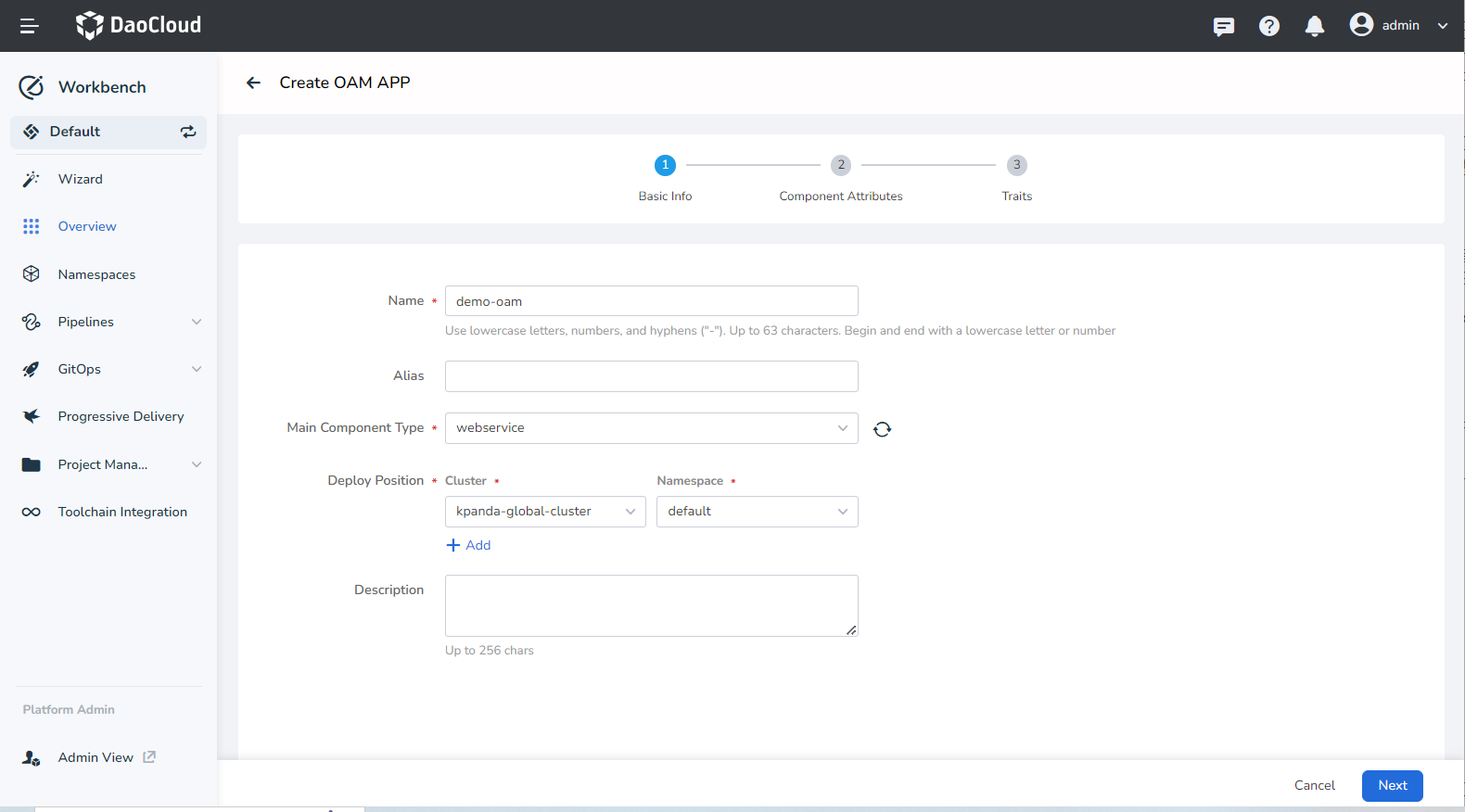
-
Configure parameters for the chosen components as per the Built-in Component List.
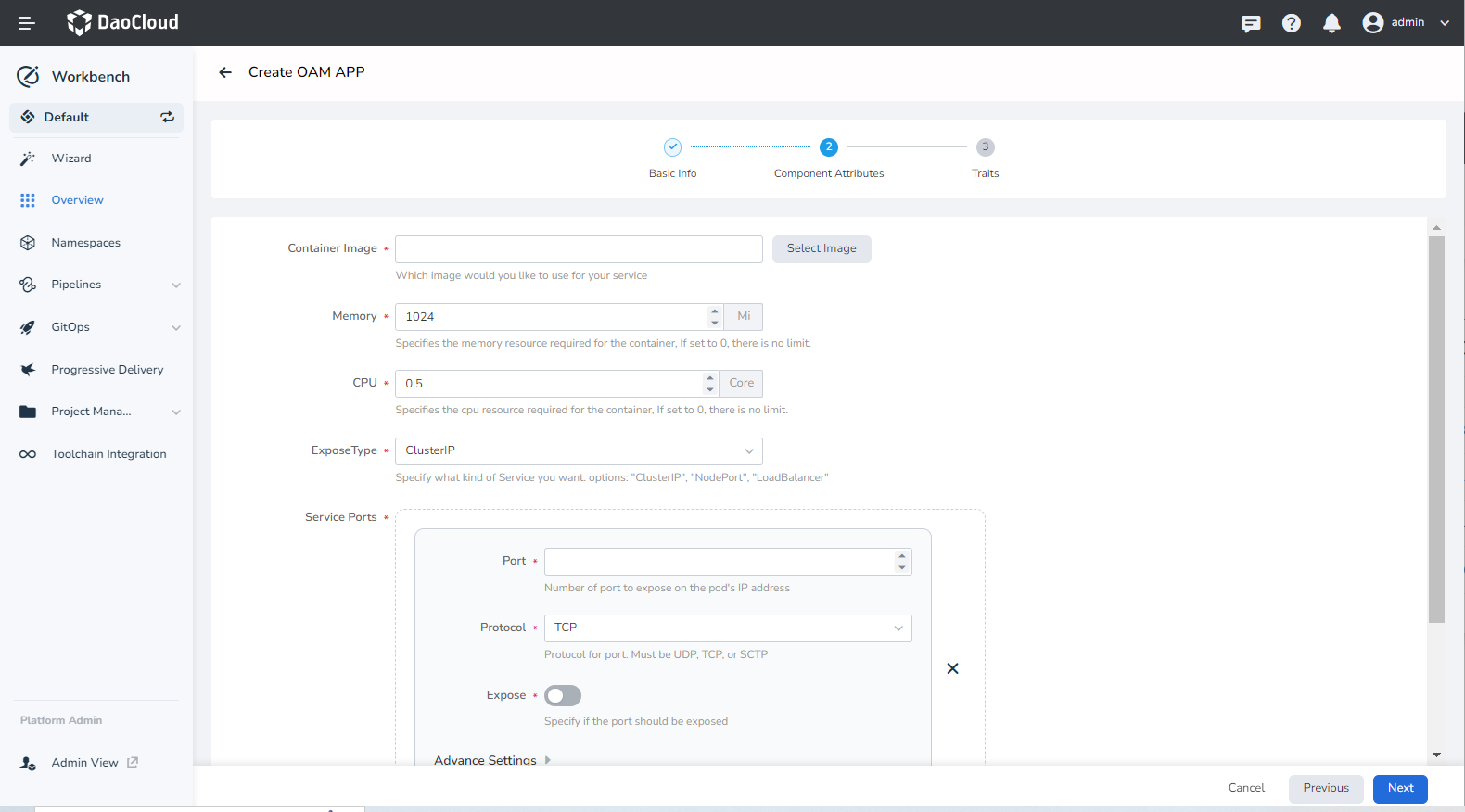
-
Configure traits for the selected components as per the Built-in Trait List.

-
Click OK to finalize the creation. Upon successful creation, you will be redirected to the OAM application list page.
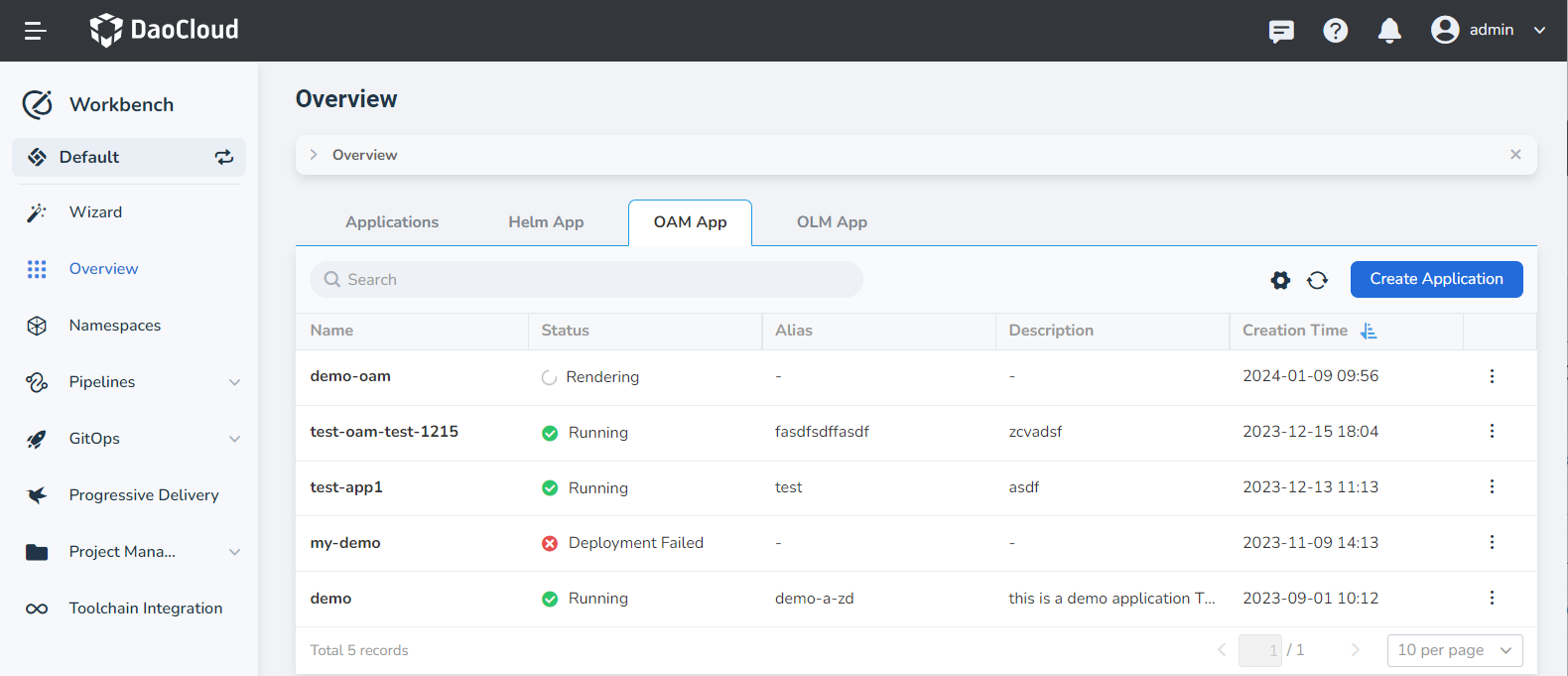
-
Click the application name to access the OAM application details page. Here, you can view the basic information of the OAM application, component, app status, and conduct operations such as adding components and traits.
